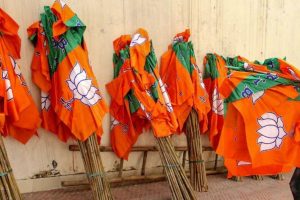Recent heat waves have shown that they can turn into killers for the poor if they are unable to take appropriate protective measures. Of course, protective instructions have been emphasized repeatedly including avoiding going out in heat wave conditions. However these can be meaningless for those daily wage workers who need to work even in the most difficult conditions to keep hunger at bay.
In the course of recent conversations with Delhi-based open space workers exposed to heat, it transpired that while a few avoided working on the hottest days, numerous were those workers who stated that even on such days they went out to seek work on daily wages. In terms of working as well as living conditions, the vulnerability of working class, poor and homeless people in cities of South Asia is increasing in times of heat waves as they are exposed to increasing health problems, difficulties and stress.
This is evident from several recent reports from India, Pakistan, Bangladesh and other parts of South Asia where a significant number of heat-related deaths have also been reported. While open-space workers like those engaged in construction are being exposed to heat at the work place, the overall impact is worsened by having to return to hot living conditions after work with the increasing tendency of nights also recording high temperatures.
Electricity and water problems add to these problems. There is increasing evidence of working class living areas and colonies being much hotter than the areas inhabited by the elite sections which tend generally to have a much higher green cover with several parks and rows of trees. The homeless people are most intensely exposed to hot weather during day and night.
All these factors which increase the problems of workers and related sections of the urban poor have been at work on a vast scale in the recent heat wave in South Asia. Recent interviews with open-space workers at three locations in Delhi revealed that almost all of them felt that during this summer, the heat was the worst they had ever experienced. Several of them mentioned increasing health problems at work sites and falling ill more frequently.
There has not been any significant improvement in workplace conditions and such essentials as ensuring supply of clean and cold drinking water or shady, cooler places for rest are not always available. Some kind employers ensure this while others do not, workers said. Workers reacted very favourably to the idea of a subsistence allowance being provided to all vulnerable households in heat wave conditions. Such a move has been initiated in Ahmedabad under the heat action plan for the city, and needs consideration at a much wider level. The vulnerability of the homeless and destitute people living on footpaths or roadsides or under flyovers is the highest.
According to a leading NGO of Pakistan, the Edhi Foundation, 450 people died in just four days in the last week of June in the port city of Karachi which at a stretch of several days experienced temperatures exceeding 40 degrees C. The foundation stated that most of those who died were homeless people living on the streets. In Delhi, a report of the Centre for Holistic Development stated that 192 homeless persons died within a span of nine days in mid-June due largely to heat-wave conditions. Acting on a complaint made on the basis of this as well as additional information, the National Human Rights Commission (NHRC) has sought a detailed report from the Delhi government.
Such reports of a large number of deaths of homeless people indicate both the increased severity of heat waves as well as pre-existing high vulnerabilities of homeless and destitute people. Earlier the concern over high risks faced by them in cities like Delhi was confined mainly to the shorter winter season, but now they face high risks all around the year. The highest risks are now at the time of heat waves. As this writer has been pleading for a long time, the programmes for homeless people need to change keeping in view the changing situation, but this has not yet been adequately reflected in initiatives for homeless people.
Recent inquiries made by this writer at labour chowks – gathering points of daily wage workers where they are hired – indicated that generally no shelter and shade for workers is provided. This makes waiting here very difficult during the extended hot days as well as rainy days. Shelter, shade and drinking water facilities should be provided at all labour chowks. Even in the morning hours, many workers at the gathering site look tired and stressed. They say that at times during the recent heat wave, they felt that they could not carry on any further. Yet such are the compulsions of survival that the next day they again found themselves heading towards the labour chowk.
Keeping in view this extreme vulnerability of workers to heat waves in times of global warming, governments need to do much more to bring relief to open space workers as well as to homeless people. South Asia is one part of the world where the impact of heat waves can be most harmful for open-space workers and homeless people, and hence this region is a special area of concern. (The writer is Honorary Convener, Campaign to Save Earth Now. His recent books include Protecting Earth for Children, Man over Machine and A Day in 2071.)












